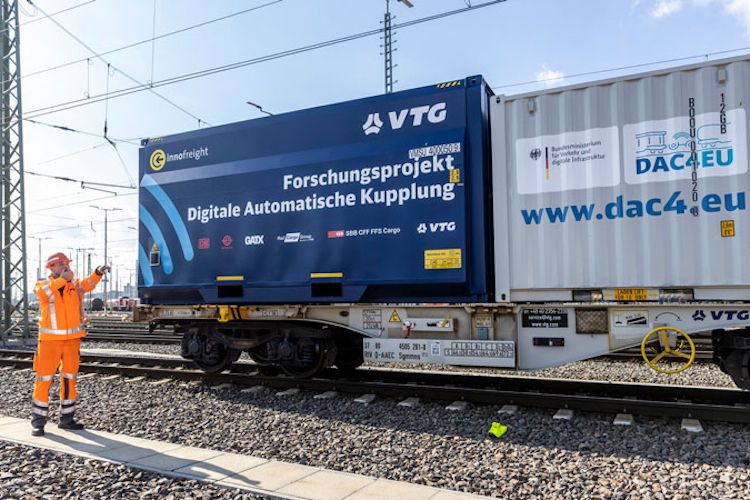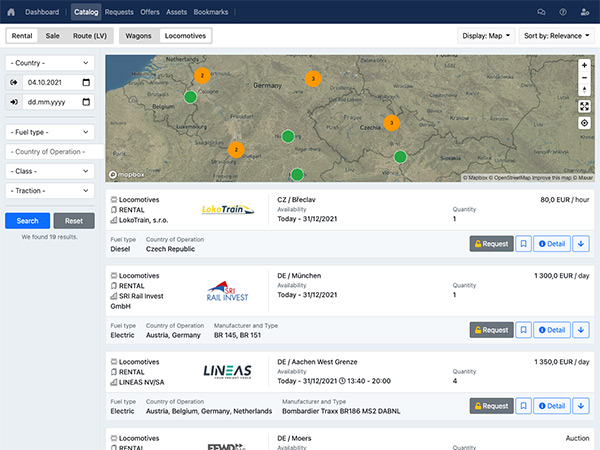The introduction of Digital Automatic Coupling (DAC) for freight trains is gaining momentum, with the test train ready to embark on the next major pan-European test tour. The first months of practical testing of the digital freight train, equipped with various DAC prototypes, have been successfully completed. The aim of the trials was to test the functionality of the DAC in different situations and to identify possible weaknesses.
The DAC is the backbone of the digitalization of freight trains. At DB Cargo alone, up to 70,000 coupling operations to form trains are carried out manually every day. With the DAC, wagons can be connected in a matter of seconds, including brake and digital control lines. All shunting and operational processes in freight transport can be automated and carried out more quickly. This is why the Europe-wide introduction of the DAC is the decisive lever for making rail transport more competitive with road transport and for achieving Europe's climate goals. However, there are still voices in the rail industry (f.e. a Polish rail freight Federation of Independent Rail Operators) about the fact that DAC technology has not yet been fully tested.
The DAC manufacturers are now moving on to the next stage of development. The aim is to achieve the standard for freight trains in Europe in the next few months. The German Federal Ministry of Digital and Transport is providing an additional seven million euros for another testing phase, during which the manufacturers and the pan-European consortium will work closely together.
“I am very pleased that the DAC is proving its worth in everyday life and that we can help this ground-breaking technology achieve a breakthrough with the continuation of European test operations. However, this presupposes that not only the technical but also the financial conditions are created. The Federal Government will therefore promote the DAC to all European partners, as it did today in Brussels. Because one thing is clear: how flexibly rail can react to the requirements of freight transport is directly related to how quickly we get the digital freight train on the rails,” said Michael Theurer, Parliamentary State Secretary and Commissioner of the Federal Government for Rail Transport.
Over the past more than one and a half years, the test train has covered a total of 10,000km across seven European countries. The train entered 25 different marshalling yards and operation was tested in the lowlands, in the Alps, and under extreme weather conditions from -25 to +40 degrees. The funding for the extension of the DAC project makes it possible for the test train, consisting of 18 cars and 40 DAC prototypes, to be on the road in more European countries.
“More goods on the railways – automation, and digitalization are absolutely necessary for this. Only with more goods by rail can we achieve the climate goals of Germany and the EU! The DAC is an investment for the future of our planet. Throughout Europe, DAC has proven itself in the tough day-to-day operations – technically, we can start with the conversion,” commented Sigrid Nikutta, DB Board Member for Freight Transport.

